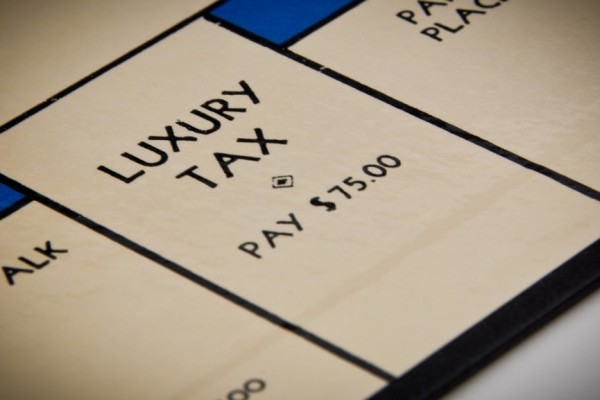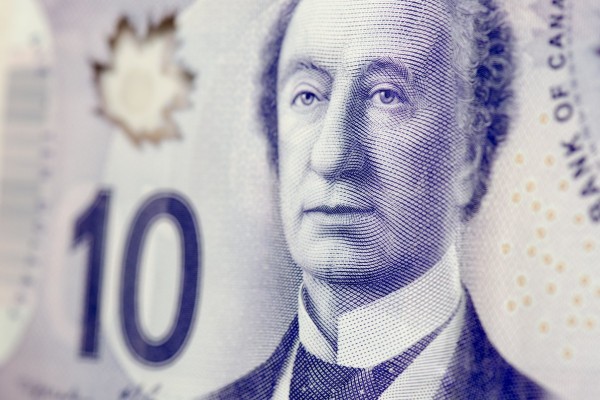The return of Mr. Keynes

British economist John Maynard Keynes. Illustration by Ted Barker.
Keynes is back. John Maynard Keynes, the British economist whose economic theories dominated policy discourse for over three decades following WWII, has returned from the graveyard of discarded and abandoned theorists. Blamed for the strange brew known as stagflation, Keynes’ economics had been unceremoniously dumped there in the mid-seventies. His economics was replaced by that rediscovered nineteenth-century concoction of deregulation, privitization and free trade that, under the rubric of neoliberalism, ruled economic policy making for the past quarter century. And so, the cycle turns. Blamed for the excesses resulting in the financial meltdown and economic crisis of 2008-09, the economic pooh-bahs have returned to Keynes. And we are presented with terms heretofore unknown to this generation: liquidity trap, paradox of thrift and, of course, fiscal stimulus.
Writing in the midst of the Great Depression, Keynes showed that there was a strong tendency in mature capitalist economies for savings (corporate profits and household/personal savings) to over-run profitable investment opportunities, resulting in a permanent situation of stagnation. With production capacity in excess of what can be sold at profitable prices, employers cut back production, lay off workers and wait until more profitable conditions return. But, argued Keynes, contrary to the prevailing theory at the time—theory that had ruled political economy for over a century—economic slumps are not necessarily self-correcting by means of the free market. Falling wages resulting from mass unemployment could well improve profit margins enough to promote a new round of business investment—except for the fact that they simultaneously contract purchasing power, thereby diminishing sales markets.
His solution was a regime of stepped-up government spending—financed by public borrowing—to stimulate economic growth by offsetting the shortfall of private investment and consumption spending. Increased tax revenues resulting from a growing economy would eventually enable the state to pay down the public debt arising from accumulated deficts.
Keynes was not against using monetary policy—reduced interest rates—as a way to induce businesses and consumers to borrow and spend. But he was worried about a liquidity trap, the inability of monetary authorities to increase credit, simply because in severe downturns banks are stingy with loans and businesses/consumers, already in debt, are reluctant to take on more. The fact that today central banks have flooded the commercial banks with new money and have reduced short-term interest rates to almost zero—with little noticeable effect—illustrates the power of his argument.
Keynes was also not opposed to reducing tax rates as a way of inducing more spending. His concern here was that households and businesses, overburdened with debt, are more likely to use the extra cash to pay down debts or build up savings rather than put it into purchases. Thrift might be virtuous for any one individual, wrote Keynes, but could damage the economy if attempted by many, since it would result in less aggregate spending, further slowing the economy. Thus, the paradox of thrift. In any case, in today’s reality, a good portion of what would be spent on goods are imported from China, with little effect on domestic economies.
So, he concluded, injecting large amounts of new government spending was the most effective way to stimulate declining economies and to prompt a recovery and fuller employment.
In some circles, bigger government reeks of socialism. Keynes was no socialist—although, as this wry comment of his illustrates, he was not disinclined to poke fun at some of the more absurd claims on behalf of capitalism: “Capitalism is the extraordinary belief that the nastiest men, for the nastiest of reasons, will somehow work for the benefit of us all.”
In point of fact, Keynes was concerned that, unless the state intervened to find a way out of the depression, the working class would revolt and establish a socialist state. To find an alternative to a socialist future was his mission, his political economy.
Amidst deficits, big business safeguards its interests
The two-decade war against deficits was in reality a cover for neoliberalism’s obsession with government spending—or, more correctly, government spending that in one way or another interfered with the economic rule of the market and the enterprise system. (The year-after-year massive U.S. deficit has never challenged these ideologues, because it has been mainly composed of policing and military expenditures and expenditures to defend the American Empire.)
Except for the small but vocal remnant of libertarian fundamentalists, however, virtually all commentators, business and political leaders have now come to the same conclusion Keynes did just over sixty years ago: unless government comes to the rescue, the entire capitalist economy is in danger of unraveling.
In the face of this once-in-a-century economic crisis, decades of opposition to deficit spending has all but vanished. The challenge for business, now, is to ensure that, in the torrent of state expenditures about to be unleashed, its interests are safeguarded. No one could argue that, in the bailouts to the banks and the auto industry, so far they have managed exceedingly well to defend their interests. Indeed, the benefits to the credit system and to auto seem incidental to the benefits these bailouts have bequeathed to bank owners and owners of two of the Big Three.
The rehabilitation of Keynes to good standing was effectively announced at the November, 2008 meeting of the Group of 20 leading industrialized and emerging economies. In their communique, they vowed “to use fiscal measures to stimulate domestic demand to rapid effect.”
This announcement has been followed by a rash of policy commitments by governments everywhere in he world to shore up their economies by injecting them with large doses of public spending. In the U.S., with its 25 percent of the world’s GDP, for example, President-Elect Obama declared he would inject at least a trillion dollars of public money into the economy. Canada’s finance minister, Jim Flaherty, in his wimpy November, 2008 budget gave evidence that Canada was hoping for a free ride on Obama’s plans, but the Conservatives’ scheme enraged the Canadian public and was smoked out by the emergence of the Liberal-NDP Coalition. Details of their January 27 budget were not available at the time of writing.
Will Keynes work in 2009?
Keynesianism’s track record is inconclusive at best. From a strictly numerical point of view, Franklin Roosevelt’s New Deal fell far short of the mark. There were 15 million Americans out of work when he assumed office in March, 1933, and 11 million unemployed in 1937, when the economy turned down again. Full recovery from the Great Depression only arrived with rearmament and war.
Keynsianism took full credit for the post-WWII-era prosperity, but in reality it was never put to the test. A massive, pent-up demand for goods and services, the baby boom and suburbanization, cheap raw materials, new technologies, moderate wages, strong export markets, high levels of investment and a stable international order all combined to create a wave of expansion. The U.S. Marshall Plan, responding to the massive destruction of capital, buildings, homes and all manner of infrastructure in Europe, created unusual investment opportunities. Government fiscal stimulus boosted domestic demand, too, but it was hardly the critical factor.
As for the highly touted Keynesian counter-cyclical demand management, it was almost nowhere in evidence. Deficits alternated with surpluses, but they were rarely the result of deliberate economic policy. Recessions automatically caused deficits as a result of lower tax revenues and increased expenditures on unemployment insurance payments and welfare benefits. The reverse brought surpluses in periods of recovery. With such favourable conditions for economic growth, then, these automatic stabilizers, together with active central banks controlling the supply of money and the rate of interest, were sufficient to smooth out the business cycle and sustain the post-war prosperity.
Having falsely taken credit for thirty years of prosperity, it was inevitable that Keynesianism would be wrongly blamed for stagflation, which set in during the early 1970s. Though Keynes was not the architect of stagflation (stagnant output levels together with raging inflation), it was the case that a few decades of continuous, near-full employment finally brought the capitalist economy to a standstill.
Michael Kalecki, a brilliant Polish Marxist economist exiled in London, predicted as much in a 1947 article titled, “Political Aspects of Full Employment.” A regime of permanent full employment, he wrote, is bound to shift the balance of power between labour and capital. “The social position of the boss would be undermined and the self-assurance and class consciousness of the working class would grow. Strikes for wage increases and improvements in conditions of work would create political tension…. ‘The sack’ would cease to play its role as a disciplinary measure. … Discipline in the factories and political stability are more appreciated by the business leaders [even] than profits. Their class instincts tell them that lasting full employment is unsound from their point of view and that unemployment is an integral part of the ‘normal’ capitalist system.”
Capital strike combined with inflation boosted by the Vietnam War produced stagflation. Keynesianism was turfed, replaced by neoliberalist policy measures designed to reestablish unemployment, deregulate, weaken unions and diminish the welfare state.
Now, Keynes has been brought back. Never having been fully tested before, the question is: will his economics provide the answer to the crisis today?
It is not impossible. It boils down to whether the injections of public spending are large enough and are sustained long enough to offset the sinking of incomes caused by plant/office/store closures in the private sector. And whether, as in the case of the bank bailouts, public moneys are squandered to pay off the business class and to finance local boondoggles rather than to repair public infrastructure, build public housing, expand public transport, build renewable energy sources and extend the welfare state.
There are further complications. Very high levels of public borrowing can push up interest rates, which could frustrate the original purpose of the borrowing by discouraging household and business spending. Also, countries like the U.S., which are already so heavily dependent on foreign borrowing, could see their currencies slide, which could then pressure other countries to devaluate their currencies in order to boost exports at a time of falling domestic demand.
A cautionary (fairy) tale
But suppose that none of this transpires and that a full recovery comes about a few years down the road. Here, we enter the realm Keynes talked about in his brilliant fairy tale, “Economic Possibilities For Our Grandchildren.” Through a policy of capital saturation—a decade or so of investment at full employment levels—the old problem of capital scarcity could be conquered, and with it “the euthanasia of the cumulative oppressive power of the capitalist to exploit the scarcity value of capital.” A major source of unearned income would then be all but eliminated and inequality would no longer be justified as the price that must be paid to obtain the services of capitalists and their capital.
Alas, we have already been there. This is delusion. It assumes that the business class, so pleased with burgeoning markets that enable them to sell all their product, are indifferent to the fact that, in the wake of the shift in the balance of class forces, profit margins have diminished along with their control of the labour process. Or that they have no options—like shifting their surpluses out of the “real economy” to the “paper economy,” speculating in securities and all manner of new financial instruments like derivatives. Or that they will simply surrender to Keynes, rather than using their influence to bring back neoliberalism under whatever new name it might be given.
Thinking beyond Keynes
At best, then, Keynes offers a short-term solution to the crisis. Socialists need to think beyond Keynes. With capitalism now so thoroughly discredited, this is the time for bold proposals. I am speaking of proposals for democratizing the financial system: turning banks into a public utility; taking public ownership and control of the energy industry; proposals for a massive public program to build affordable housing. And, meanwhile: requiring all employers receiving public contracts and subsidies, or in any way involved in the new public works, to pay living wages.
And what an opportunity to grab the horns of this economic crisis and turn it in the direction of a green economic transition! One example: wherever feasible, re-open and re-tool abandoned auto and parts plants and other plants—as well as building new plants—to produce electric buses, trains, solar panels, windmills, geothermal machinery, water-treatment technology and waste-disposal products.
Who will pay for these and other reforms that reduce our dependence on the so-called free market—like government guarantee of pensions, extending healthcare to include dental care and pharmacare (with public provision of prescription drugs, where feasible)? Our rulers seem to have had no difficulty finding the money to pay for the bailouts and handouts demanded by bankers, auto magnates and others of their class. Let’s make them find the money to repair the damage their system has inflicted upon us and the environment!
“Make the rich pay” is where to start. As for the working class, it has never begrudged paying its fair share of increased taxes when they are used to meet collective needs and income security.
Further reading
- Cy Gonick, The Great Economic Debate: Failed Economics and a Future for Canada (Lorimer, 1984). Especially chapters 4 and 5.
- Stanley Aronowitz, “Facing the Economic Crisis,” The Bullet: A Socialist Project E-Bulletin, no. 170, December 26, 2008.
- Leo Panitch, “From the Global Crisis to Canada’s Crisis,” The Bullet: A Socialist Project E-Bulletin, no. 164, December 4, 2008.
- Sam Gindin, “The Financial Crisis: Notes on Alternatives,” The Bullet: A Socialist Project E-Bulletin, no. 156, November 24, 2008.
- “Notes from the Editors,” Monthly Review, January, 2009.
- Andy Kilmister, “The Economic Crisis and Its Effects,” International Viewpoint, December, 2008.
- Joseph Stiglitz, “The Triumphant Return of John Maynard Keynes,” Policy Innovations, December 15, 2008.
This article appeared in the March/April 2009 issue of Canadian Dimension (The Great Recession).










